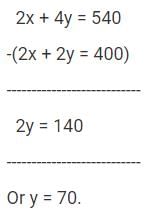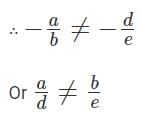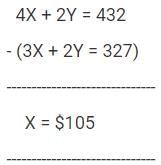Test: Basic Algebra - GMAT MCQ
10 Questions MCQ Test - Test: Basic Algebra
A poultry farm has only chickens and pigs. When the manager of the poultry counted the heads of the stock in the farm, the number totaled up to 200. However, when the number of legs was counted, the number totaled up to 540. How many more chickens were there in the farm? Note: In the farm, each pig had 4 legs and each chicken had 2 legs.
Three years back, a father was 24 years older than his son. At present the father is 5 times as old as the son. How old will the son be three years from now?
For what values of 'k' will the pair of equations 3x + 4y = 12 and kx + 12y = 30 NOT have a unique solution?
The basic one-way air fare for a child aged between 3 and 10 years costs half the regular fare for an adult plus a reservation charge that is the same on the child's ticket as on the adult's ticket. One reserved ticket for an adult costs $216 and the cost of a reserved ticket for an adult and a child (aged between 3 and 10) costs $327. What is the basic fare for the journey for an adult?
A children's gift store sells gift certificates in denominations of $3 and $5. The store sold 'm' $3 certificates and 'n' $5 certificates worth $93 on a Saturday afternoon. If 'm' and 'n' are natural numbers, how many different values can 'm' take?
What is the highest integral value of 'k' for which the quadratic equation x2 - 6x + k = 0 will have two real and distinct roots?
If one of the roots of the quadratic equation x2 + mx + 24 = 0 is 1.5, then what is the value of m?
For what value of 'm' will the quadratic equation x2 - mx + 4 = 0 have real and equal roots?
y = x2 + bx + 256 cuts the x axis at (h, 0) and (k, 0). If h and k are integers, what is the least value of b?
The cost C and revenue R of a product depend on the number of units x produced. The equations are:
- C=5000+20x
- R=50x
Find the number of units x that must be produced for the company to break even (i.e., where revenue equals cost).























